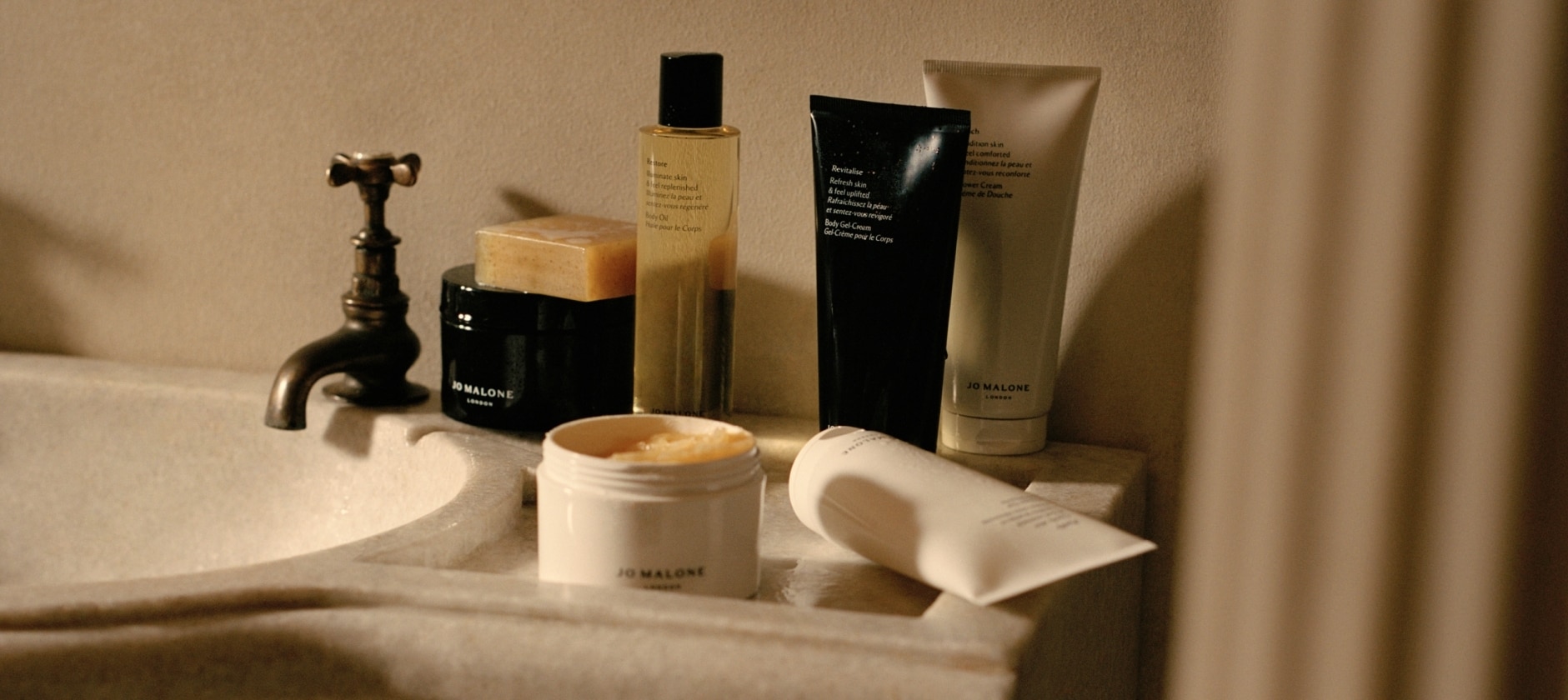BAG
Your bag is currently empty


The Resurgence And Healing Powers
Of The Roman Baths
The Resurgence And Healing Powers
Of The Roman Baths
Read time: 6 minutes

Revered poet Sylvia Plath famously said, ‘There must be quite a few things a hot bath won’t cure but I don’t know many of them.’ The power to heal through water has been a theme throughout history. Modern-day research argues that even spending time in the proximity of water can reduce fatigue, stimulate mental wellness and reduce anxiety. Over 2,000 years ago however, the Romans had a head start on this with the world-famous Roman baths.
For the Romans, their baths went beyond the embodiment of architectural magnificence. They were an ode to the beauty and necessity of wellness, of well-being and of leisure. The baths were spaces people occupied in order to relax, heal, commune, rest and partake in the daily ritual of caring for oneself. Using a combination of waters at different temperatures and a medley of essential oils to bring relief to the body, mind and soul, this ancient practice of seeking solace is having a much welcome revival and is the inspiration behind Jo Malone London’s new Care Collection.
‘For the Romans, their baths went beyond the embodiment of architectural magnificence’
The Romans had an unwavering commitment to wellness that was akin to a form of worship, perhaps explaining why Roman baths were also considered temples. The healing rituals that took place in the buildings touted the importance of wellness long before this pursuit became a modern phenomenon. It arguably inspired the global iteration of what we know today as the spa – a place to visit for revival and restoration. The Roman’s approach to the spa, however, is rooted in something that goes far beyond the superficial. Their bath house rituals consisted of resting, steaming the pores, massaging and bathing in separate rooms and of course, the waters. These waters of different temperatures all served different purposes but essentially delivered numerous benefits to one’s skin and well-being.

The gentle heat that radiated through the floors and the walls of the tepidarium – a lukewarm room – relaxed and prepared the body for the rooms that followed. The heated spring waters of the caldarium – a hot room – steamed, cleaned and purified the skin. Bathers would then move onto the next stage where they slathered themselves with oils, their body then deeply exfoliated with a scrub. The final stage – the frigidarium – featured a large pool containing freezing cold water in which the brave bathers would take a brisk, skin tingling dip thereby closing the pores that had been opened by the heat from the previous treatments. It is the final bold act to an incredible bathing experience that leaves the bather – mind, body and soul – totally revitalised. A true lesson in self-care, with each stage of the bathing rituals of Roman times celebrated within each product and routine of the Care Collection.
‘A true lesson in self-care, with each stage of the bathing rituals of Roman times celebrated within each product and routine of the Care Collection’

Arguably one of the most famous baths ever built in Britain is the Roman Baths, situated in Bath, Somerset. Known for its naturally occurring hot springs, which, according to the legend of Bladud – the king who is said to have founded the ancient city – had powers to heal the sick. And so, for centuries, Bath was a place people sojourned to in order to seek respite and healing. During the Victorian era, the Roman ruins of the baths were rediscovered and while today visitors can peruse the baths, they are no longer open to bathe in. Thankfully, there are now modern – but authentic – iterations of the Roman baths where bathers can enjoy all the wellness benefits the Romans had in mind.
AIRE is, for all intents and purposes, a spa. But in reality, this glorious paean to wellness is a temple that takes its inspiration from the traditions of Ancient Rome, Greek and Ottoman civilisations. Set in restored historical buildings in the middle of bustling cities including London, New York and Barcelona, it creates an atmosphere dedicated to the relaxation of the mind, body and soul, a place where it is said that the concept of time no longer exists. Amid the menu of treatments, such as massages and exfoliation based on ancient beauty and health principles, every AIRE experience includes ancient baths of different temperatures and properties: the caldarium (40°C), frigidarium (14°C and 10°C) and tepidarium (36°C). These hot and warm waters are known for their power to reduce cortisol levels thereby reducing our propensity for stress. The cold water stimulates the vagus nerve which in turn moves us into our rest and digest mode. Also featured in AIRE is the balneum, a hydrotherapy jet bath, the vaporium – a steam room infused with revitalising peppermint – and a flotarium, a unique salt water bath with a high saline concentration. This increases the density of the water, allowing bathers to float effortlessly. It’s a ritual proven to reduce the signs of stress and anxiety. Amid the disquiet omnipresent in the world and the busyness of life, the bath house is an open invitation to discover the beauty of de-stressing, finding solace, nurturing your spirit and experiencing the transformative power of relaxation.
‘The Romans had an unwavering commitment to wellness that was akin to a form of worship, perhaps explaining why Roman baths were also considered temples’

Away from the bustle of the city lies another sanctuary that has looked to the Roman baths to offer an extraordinary temple of wellness. Deep in the woodlands of Estelle Manor – the 85-acre luxury country house hotel and private members club in Oxfordshire – lies Eynsham Baths. Taking five years to complete, it is a jaw dropping ode to the baths of the Roman era. The neoclassical architecture of the resplendent 3,000 square metre property – think sculpted stone columns and hand-shaped bricks – is a nod to the Roman villa ruins discovered close to the estate. While it features a dazzling labyrinth of both private and open spaces and ancient rituals taken from the world’s oldest philosophies on health and longevity, the healing power of the waters is at the heart of the baths. Based on clinical research supporting water’s health benefits, bathers are encouraged to flow through different thermal areas. Specific to Eynsham is the hay sauna, a forward-thinking addition to the baths found to stimulate the body’s immune system and metabolic rate as well as soothe the nervous system. Ultimately it is a proposition of serenity that aims to bring joy, improve mental health, reduce fatigue and ease away the weariness and pressures of modern life. Just like the ancient Roman baths themselves.